
Remote & Async Work — 6 min

Global HR — 26 min
Get noticed by diverse, qualified candidates across the globe. Don't let geography stand in the way of hiring great people.

Tired of wasting time and resources on hiring the wrong people? If so, then maybe it’s time to rethink your recruitment strategies.
Remote recruiting can be your new, cost-effective way to attract and keep top talent.
“We’re seeing these changes first hand while supporting Remote’s clients with their hiring needs,” says Job van der Voort, CEO of Remote. “Companies are adopting more budget-conscious practices. This transition, understandably, hasn’t been completely smooth for everyone. But when done right, these changes can have a positive impact on the business as a whole.”
With the right strategies, your hiring plans don’t have to slow down this year. You can grow your team and succeed, even with new challenges — and Remote is here to help you make this happen.
In this guide, we’ll give you the tools, calculators, strategies, and expert advice to create a budget-friendly hiring plan. We also split it into six parts to help you quickly find the information you’re looking for.
Our Global Benefits Report found that 66% of decision makers expect remote work to become more common over the next five years. 69% of employees feel the same way.
Let's find out if remote recruiting is the right option for you.
Remote work can save businesses $10,600 per employee each year.
Remote recruiting isn't just a cost-saver — it's also a powerful recruitment strategy. By offering remote options, you can attract skilled workers from a broader talent pool and boost your competitive edge.
Once location was no longer a limitation, workers left tech hubs in droves for locales where they could create a better life-work balance. Previously overlooked workers in rural or developing areas have been able to find more opportunities working for global companies. These changes benefit both workers and business leaders who are open to hiring from places that weren’t previously considered top markets for talent.
Learn practical insights from global HR experts at Greenhouse and Remote to help you support your team's life-work balance

When you hire from a limited talent pool, you face many challenges, including:
Fewer candidates to choose from
Many candidates don’t have the specific skills you need
Lack of diversity in your local talent pool
Difficulty attracting talent for locally competitive roles
Remote hiring solves this issue, allowing you to attract new talent from markets you may not have previously considered. Expanding to new regions can exponentially increase your talent pool and make your organization more attractive to top performers seeking flexible remote roles.
As an Employer of Record (EOR), Remote has helped thousands of companies expand their teams globally and hire the best talent based on skills and organizational fit, not location. Our team of experts understands the ins and outs of making remote hiring work — and all the advantages it can bring. Especially for companies taking a more budget-conscious approach.
If you want to start recruiting remote talent, check out our remote-first recruiting guide to emulate how we do it at Remote. Our guide reveals the strategies helped us scale our own internal team across more than 65 countries.
Learn the processes you need to find, recruit, and onboard remote employees (and stay compliant while you're at it).
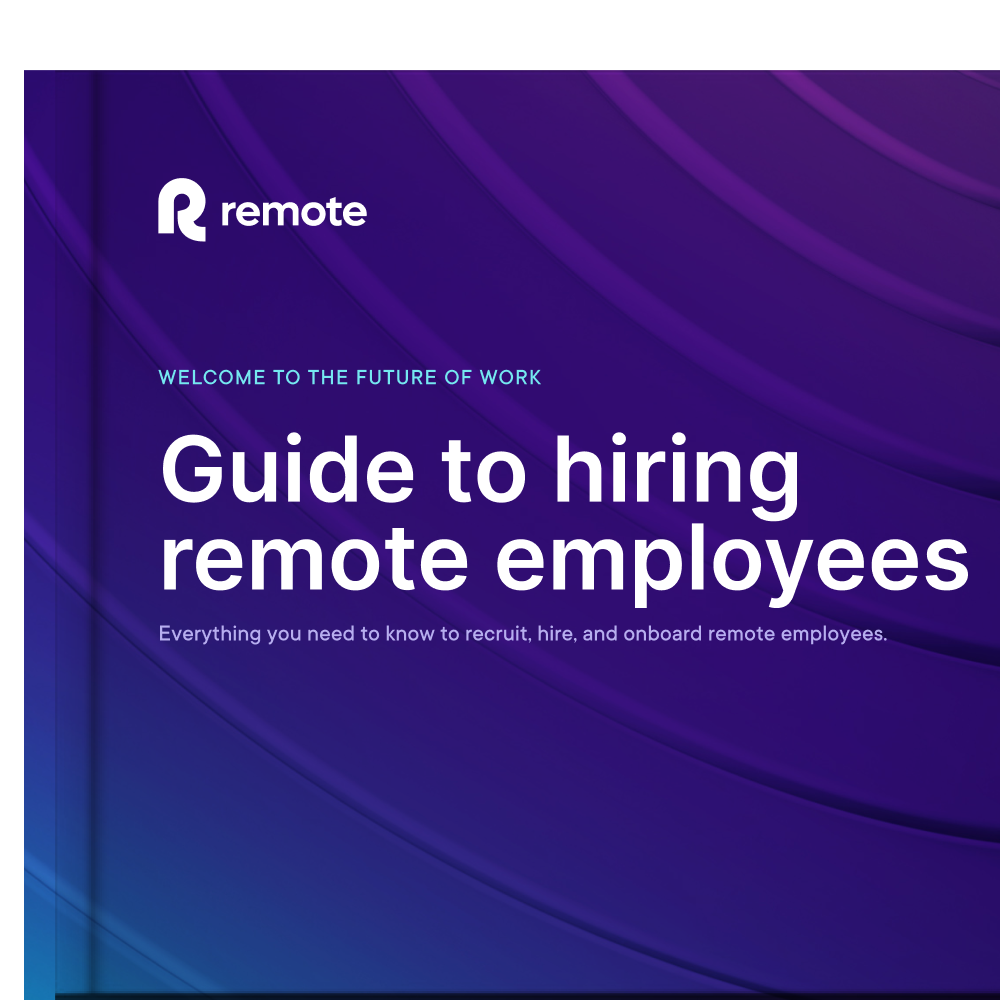
Attracting the best candidates starts with getting your brand in front of the right eyes. Here’s how to do this:
Your employer brand is the personality your company shows to potential employees. Show off your company culture, core values, and benefits to stand out. Your employee value proposition gives job seekers a reason to choose you over others.
When candidates perceive your company as a fantastic place to work, they’re more likely to apply for positions on their own. This means you get more high-quality candidates without having to hunt them down yourself. Plus, you save money on ads and recruiting services and cut down on extensive outreach efforts.
So focus on building a strong employer brand as part of your effective recruiting plans.
Job postings are often the first impression candidates get of your company, so make them count. Clear, well-written, and on-brand ads on job boards attract the right candidates and remove unqualified applications, saving you time and resources.
Here's how to optimize your job postings:
Reflect your company’s culture:
Write in a way that mirrors your company's vibe, whether it's fun and casual or formal and businesslike.
Be transparent: Clearly outline the job title, responsibilities, qualifications, and required skills. Don’t forget to include salary information to set clear expectations.
Provide clear application instructions: Detail the steps candidates need to take to apply, including any required documents, like a resume or cover letter.
Use relevant keywords: Include important keywords in the job title as well as in the responsibilities and qualifications sections to help your post stand out in Internet searches.
Optimizing your job postings helps you attract the right talent and makes the hiring process smoother and more effective.
Social media platforms like LinkedIn, Facebook, X (formerly Twitter), and Instagram are powerful, cost-effective recruiting tools. They connect you with a diverse, global pool of candidates, boosting your chances of finding the perfect fit for your job openings.
Here’s how to maximize social media’s potential:
Share engaging content: Post content that reflects your company’s brand and values to attract ideal candidates who resonate with your culture. For example, do you care about the environment? Share how you plant a tree for every product sold.
Targeted ads: Tailor job ads to specific demographics, locations, industries, and interests to reach the most suitable candidates.
Engage with potential candidates: Answer questions, respond to comments, and join relevant industry groups to expand your reach.

Before you start recruiting, you need to know where the best candidates are. This takes expert knowledge, especially if you want to keep costs down. Why? Because hiring costs can vary widely based on:
Role type
Skill level
The needs of the organization
The employee’s location
Understanding these factors helps you pinpoint where to find the best talent. While your hiring managers should collaborate with your recruitment team to combine their expertise, here’s how you can start your search:
Start by tapping into your current employees' networks. Your team often knows people who'd be a good fit for the company, both in terms of skills and cultural alignment. These referrals usually result in higher-quality hires who hit the ground running and stick around longer.
An employee referral program can also cut recruitment costs by minimizing the need for external agencies and extensive advertising. Here’s how to set up and sweeten your referral program:
Define who can participate, making sure to spell out any restrictions on roles or departments.
Provide a step-by-step guide for submitting referrals, including the necessary forms and methods. Make it simple!
Offer attractive rewards, such as referral bonuses, extra vacation days, gift cards, or recognition awards. Make it worth their while.
Where is the best talent for your open roles?
Which job markets are the most competitive in different industries?
How can you make the most of the remote work world without spending all your money in saturated, hyper-competitive markets like New York, San Francisco, and London?
These are tough questions, but Remote is passionate about helping employers tackle this challenge, so we prepared a dedicated research report to put all the answers in one place.
Remote’s Tech Talent Report gives you an exclusive look into how hiring managers are finding and onboarding talent from around the world. With this data, collected from 1,400 global hiring managers, you can see:
Where companies are hiring
Which markets have the best demand-supply ratios for tech talent
Where the top emerging tech hubs exist today.

Download the Remote Tech Talent Report to learn:
The state of global tech talent recruitment and why some hiring managers are reluctant to hire internationally
Analysis of 15 emerging tech hubs and what specialist skills to look for in each market
Insight into global compensation and how to develop fair salaries, benefits, and stock option plans
The processes needed to enable high-performing remote workers, with resources and advice on how to build a globally distributed team
Hiring software engineers is one of the greatest challenges companies face, even for companies already hiring internationally. Because we employ software engineers in dozens of countries around the world, we know more than most about what it costs to hire engineering talent and how to make competitive offers.
We turned this knowledge and our own data-driven insights into our Where to Hire Report. This is an interactive tool to help business leaders better understand where to focus their recruitment efforts based on role type. We include metrics like talent availability, estimated cost of employment (total), annualized-based salary, benefits requirements, and more.
Here’s an example. The Where to Hire tool shows that top locations for recruiting backend engineers include Brazil and India. These are locations with high talent availability and competitive total costs of employment — $101,609 and $50,338 USD per year respectively, compared to $200,379 in the US.
However, before you post job listings in São Paulo or Mumbai, you also have to consider the overall needs of your organization. Can you offer the right environment to support employees from those countries? Total cost of employment isn’t everything, and focusing on finding the lowest-cost employees at the expense of other factors can cost businesses more money in the long-term.
The Where to Hire tool currently offers data for 16 top markets (from the US to Spain to the Philippines) and several popular role types for engineering and data talent. This tool’s global compensation data is fueled by research from our partner Kamsa, a compensation management program providing real-time global salary data and expert support to help with compensation reviews and benchmarking.
Don’t ignore the power of a great candidate experience! It boosts your employer brand, speeds up hiring, and makes qualified candidates more likely to say “yes” to job offers. Here’s how to make it happen:
Nobody wants to spend hours on a job application, so make applying easy and quick. Here are some tips:
Ensure that your application portal is easy to navigate and mobile-friendly so candidates can apply easily from any device.
Only ask for essential information. Long forms and unnecessary questions can scare off potential applicants.
Provide clear instructions and guidelines so that candidates know exactly what's expected, reducing confusion and frustration.
You may have a busy schedule, but so do potential candidates. Being mindful of their time shows that you value them and enhances your reputation as an employer. We suggest doing the following:
Keep candidates in the loop with regular updates and answer their questions promptly.
Be upfront about the recruitment timeline, next steps, and what they can expect. This helps candidates manage their expectations and keeps anxiety at bay.
Offer flexible scheduling for interviews and assessments to minimize the time candidates spend waiting.
Make hiring decisions promptly to avoid losing qualified candidates to other opportunities.

Interviews are often a candidate's first face-to-face interaction with your company's culture, so make it a memorable and positive experience.
Clearly communicate the interview process. Let candidates know who they'll meet and what to expect. This helps them feel prepared and less anxious.
Use structured interviews to keep things fair and give everyone a chance to shine.
Be punctual and start on time to avoid unnecessary delays.
Create a welcoming vibe. Greet candidates warmly to make them feel at ease. In virtual interviews, choose user-friendly platforms and provide clear instructions on how to use them.
Employees want to work for diverse companies. A whopping 80% of employees surveyed by CNBC said they want to work for a business that values DEI.
“Leading a recruiting function, you see how many candidates today are upfront about their desire to work for diverse companies,” says Anastasia Pshegodskaya, director of talent acquisition at Remote. “Attracting great people to work for your company means you have to hire in multiple places to build the kind of teams those great people want to work with.”
Limiting your hiring plans to local-only candidates harms your ability to build the kind of diverse team that can attract the best candidates for your open roles. The more you walk the walk on diversity, the more candidates will want to work for you.

Companies looking to scale while competition for talent remains high and budgets remain constrained must be open to hiring workers outside their own cities. Doing so presents its own set of challenges, though. How do you create and follow a headcount budget when people live in different places?
Even small businesses today can compete for the best employees in every country. A startup in Paris can hire remote workers in Poland, and a corporation in Mexico can employ remote workers in India. Any business can hire anyone, anywhere, provided the business compensates its remote workers appropriately.
And therein lies the question: how much does it really cost to hire remote global employees?
“To calculate compensation for remote employees, you have a few options,” explains Job van der Voort, co-founder and CEO of Remote. “You can pay everyone based only on their experience and role, regardless of location. You can also consider the cost of living to adjust pay for your remote employees based on where they live, or create your own formula. But no matter what you do or where you hire, one overarching principle remains the same: compensate fairly to hire great people.”
With global employment solutions like Remote now enabling companies to hire top talent all over the world, businesses can’t afford to offer low-range compensation packages and expect to attract and retain the talent they need.
When making your hiring plan, be sure your strategy keeps salaries competitive in the relevant local market. For budget-conscious companies, this might mean hiring in new places and being more strategic about which roles will add the most value to your team.
Our guide to remote compensation strategies can help you pick the best approach for your business. Maybe you want to pay top dollar everywhere to guarantee you always get the best candidates. Maybe you need a blended approach to stay flexible. Deeper insight into various compensation strategies will help you determine which will work best for your team and hiring goals.

The total cost to hire doesn’t start and end with the employee’s base salary. You must also consider the costs of mandatory social programs, benefits, and employment taxes in the country/state/territory/city where your preferred candidate lives. Certain costs, like healthcare in the United States, may not be mandatory by law but can be a must-have for job seekers.
For example, you might think it’s more affordable to hire an engineer in Brazil than Poland given that the average annual salary is $66,323 (Brazil) compared to $73,865 (Poland). However, the actual price of hiring that person in Brazil is significantly higher — $101,609 compared to $86,719 when looking at the total cost to hire in each country.

This is because Brazil has numerous social programs and mandatory collective bargaining agreement (CBA) costs that are paid for through employer taxes. The person in Brazil might still be the right hire, but if you don’t consider the differences in global markets, you could lose control of your hiring budget.
Trying to understand all these nuances might feel overwhelming, but it doesn’t have to be. At Remote, we simplify this for our clients by billing for all employees, everywhere in the world, in a single invoice, inclusive of all government costs and supplement benefits.
We also have a free Employee Cost Calculator that allows hiring managers to input an employee’s salary and see the total cost to hire in that country.
You can even compare costs across different countries to help you focus on regions that fit your hiring budget. Want even more insight into global compensation? We have you covered with our International Payroll Processing Guide, which helps businesses learn how to manage international payroll processing for globally distributed teams.
Learn how to manage global payroll for your team and keep your company compliant with international labor laws.
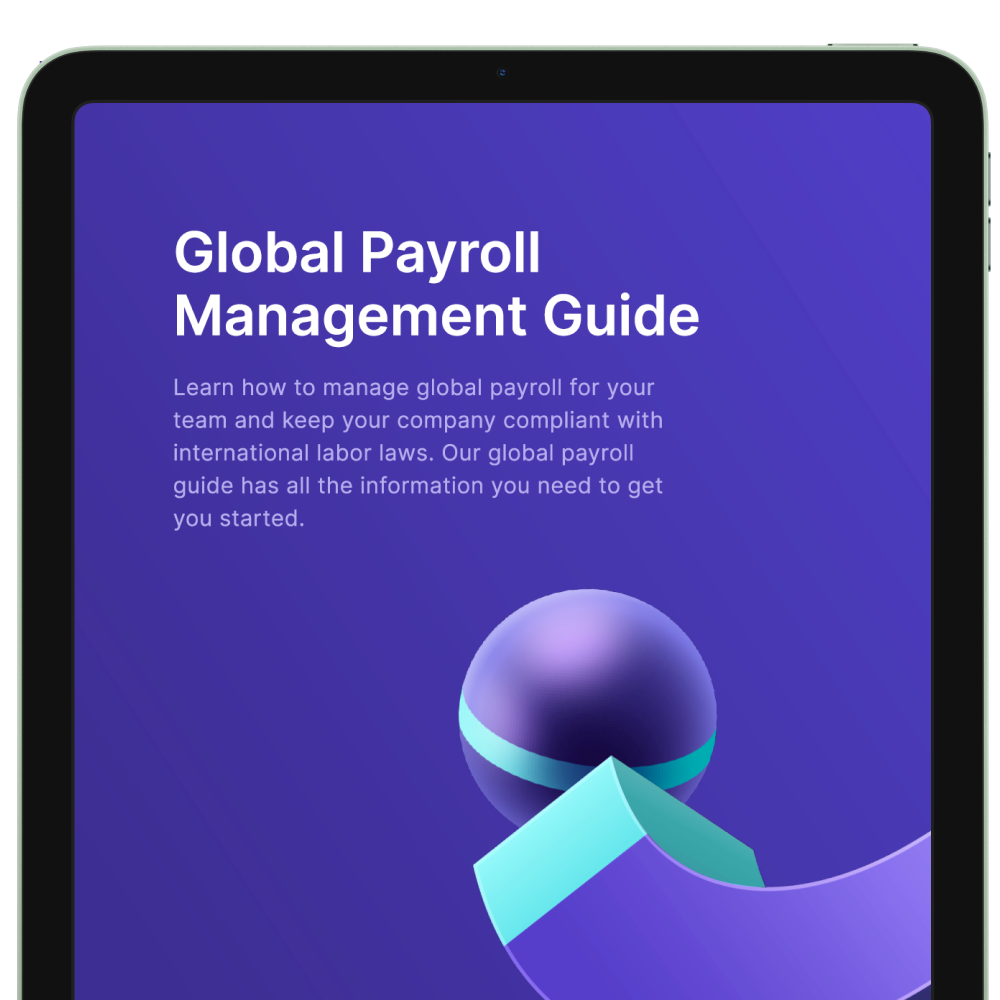
One way to reduce payroll costs is to consider hiring contractors — a strategy that can be very attractive to budget-conscious hiring managers. This can be effective in many cases. However, contractors are not always more affordable in the long run, and misclassification of an employee as a contractor can cause serious problems.
Typically, companies don’t have to pay payroll taxes or offer benefits like paid time off when hiring contractors (although it is possible to do so in some cases, as covered in our Global Benefits Report). Contractors usually do not qualify for severance packages, especially contractors on fixed contracts. So if the relationship isn’t working out, you can quickly cut ties and find someone more aligned with your business goals. Unfortunately, this ease of hiring doesn’t come without risks.
Employees and contractors are treated differently in the eyes of the law, and each country has its own definitions for each category of workers. Although you may be familiar with the laws in your home country, there is added complexity when hiring contractors internationally. With the rise of remote workers and the “gig economy,” this area of law is changing quickly.
In general, a company retains employees directly to fulfill specific and ongoing roles. Contractors are brought in to perform specific functions, often ones that the company does not have the ability to perform internally. Contractors are not people who work for the company but independent sellers of services, of whom the company is a client.
Ultimately, hiring contractors gives companies more flexibility but less control over the work performed. So what happens if a contractor should technically be an employee?
Here are a few ways to tell whether your contractor might actually be an employee:
Does the employer control when, where, or how work is completed?
Is the employer responsible for training the worker?
Does the worker receive a regular salary?
Does the worker perform key business services?
Has the contractor relationship continued over a long period of time?
Answering yes to any one of these questions could indicate an employee relationship.
By improperly classifying employees as contractors, companies may face fines, back taxes, penalties, and back pay, not to mention other legal risks and damage to the company’s reputation as an employer.
To help you minimize misclassification risks, Remote has launched a Contractor Misclassification Risk Calculator. This is a free and easy-to-use tool to help you determine your risk level, including suggestions on how to reduce your risk if you have misclassification exposure.
Work through this checklist to help determine if a new hire should have a contractor or employee relationship.
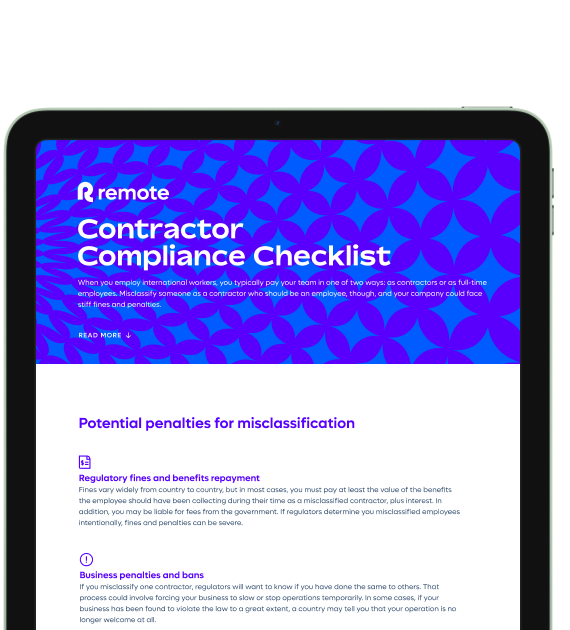
Cash compensation is far from the only consideration for organizations trying to attract high-caliber employees. Most want a strong benefits package, which can include everything from pension plans and healthcare to stock options and gym memberships.
At Remote, we call the complete package of salary, stock, and benefits “total rewards.” This catch-all term is useful to help us be more specific when we’re talking about total employee costs, just salary, or one specific piece of the compensation puzzle.
The total rewards umbrella includes salary, statutory benefits, supplemental benefits, perks, stock options, and any other form of compensation a business offers to employees. In global compensation, where statutory and expected benefits may vary greatly from one country to the next, speaking in terms of total rewards allows HR teams to have more productive conversations about compensation, growth, and offers to prospective hires.
Building a comprehensive and flexible total rewards plan is an important strategy for attracting and retaining talent during uncertain economic times.
By providing complete packages, company leaders can demonstrate they care about their workers as whole people.
That helps with hiring goals as well as building trust and increasing retention among existing employees. Attractive perks and benefits can even make up for lower cash compensation in the eyes of candidates, so don’t forget to stress your total rewards in your job descriptions and in interviews.
Remote has made our own total rewards policies publicly available to guide and inspire other companies who are exploring global hiring.
Remote's global HR experts share practical advice for building a locally relevant and globally compliant benefits program to help you attract and keep the world's best talent.
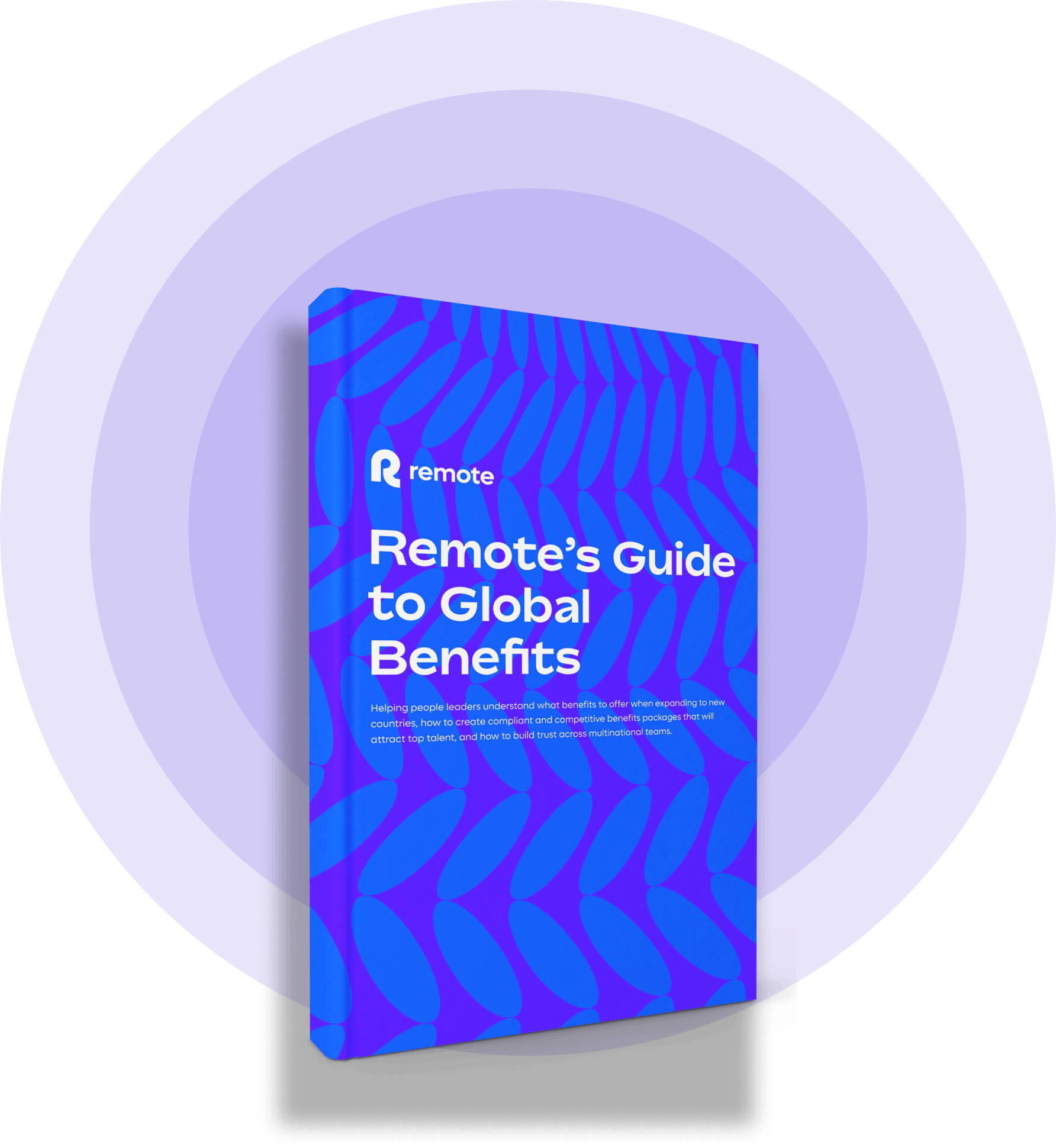
Among the most significant findings from our Global Benefits Report was how employees view benefits during challenging economic times. According to the vast majority of global workers, good benefits are even more important when company budgets are constrained.
88% of employees say that when money is tight, having good benefits that cover their fundamental needs becomes even more important.
79% of employees agree that if a company needs to freeze salaries due to a difficult economic climate, offering good benefits can still set that company apart as an appealing place to work.
If you can’t be as competitive with cash compensation or if you have had to pause pay increases, offering strong benefits can make all the difference in being able to meet your hiring goals. But which benefits are essential for international employees, and which perks might be going unused?
Learn more about that by downloading our Global Benefits Report.
One of the most surprising findings in our research has been that remote work is not, in fact, the top benefit employees want. What people actually want is flexibility — a term that can include remote work but is more reflective of a company’s respect for employees’ time and working styles in addition to working locations.
Flexibility allows parents to be more present for their children, free spirits to travel the world, couples to spend more time together, and committed grinders to pursue their passions on the side. Everyone benefits from flexibility. And the more flexible your working policies are, the more attractive your company becomes to more types of employees.
At Remote, flexibility is at the center of how we manage our own global team. We work asynchronously, which means people are generally free to set their own working hours and are evaluated based on results, not time spent online.
People can move anywhere in the world — and digital nomads are not the only ones using the perk. Many Remoters have used our relocation services to move closer to family or to new locations that are more aligned with their values.
Remote offers relocation services for our customers’ team members as well. Have an employee who wants to move from France to Finland or from Portugal to Peru? We’re here to make it easy.
Learn how Remote can help you navigate international employment and enable a compliant and hassle-free move with our expert immigration and relocation services.
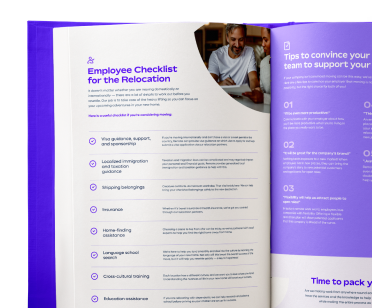
Did you know? Remote’s entire company handbook is public! Check it out to learn how we build culture, manage PTO, develop products, and celebrate success as a fully distributed team — then use our documentation to inform your own remote-first culture!
Remote has been instrumental in helping TheyDo, a globally distributed company, overcome the challenges of global recruitment.
By streamlining hiring processes and providing expert guidance on local labor laws, Remote enables TheyDo to tap into a limitless talent pool without compliance risks. Remote offers simple onboarding and payroll, allowing TheyDo to recruit top-tier candidates with speed and precision. This partnership empowers TheyDo to scale efficiently while focusing on innovation and building a world-class team.
“Remote helps us unlock unlimited talent pools, and having the best talent gives us the greatest chance of business success. They enable us to onboard quickly and seamlessly, providing specialist knowledge on local labor laws. This combination of expertise, speed, and quality creates a win-win situation for both the candidate—our new hire—and for TheyDo.” Matt Moralo Langan, Head of People
Want to check out Remote in action? Book a demo to see how using Remote can lead to a 30% reduction in time-to-hire.
Remote recruiting is a cost-effective way to find new team members or to expand to new markets. However, you might be struggling to find the right candidate through traditional job boards because you're drowning in applications. Likewise, top talent might fail to find your company as they are applying for multiple positions — that end up being non-remote roles.
That's why Remote Talent helps you cut through the noise and stand out as a remote employer to hire top talent. Plus, Remote HR Management helps you onboard, manage, and pay employees and contractors around the world with ease. Think of us as the easy and friendly solution for all your global employment needs.
Whether you have a few remote contractors, a team of 10 people in 10 countries, or hundreds of distributed team members, Remote helps you hire and manage global talent.
Sign up with Remote Talent to post open roles you need to fill today. Or, to see how Remote can help you hire and manage global team members, chat with an expert.
Get noticed by diverse, qualified candidates across the globe. Don't let geography stand in the way of hiring great people.

Subscribe to receive the latest
Remote blog posts and updates in your inbox.

Remote & Async Work — 6 min

Newsroom — 3 min

Product Updates — 6 min

Employer of Record & PEO — 3 min